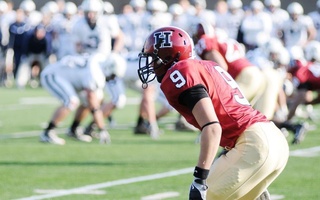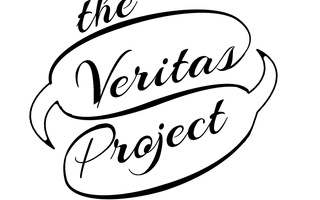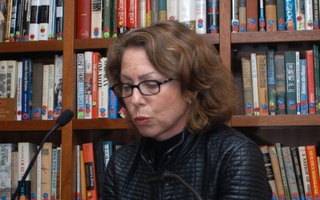UPDATED: February 6, 2013, at 5:26 a.m.
The Harvard School of Engineering and Applied Sciences will relocate “in almost its entirety” to University-owned land in North Allston in as few as five years, University President Drew G. Faust told The Crimson Tuesday.
The same announcement made later that day at the monthly Faculty Meeting of the Faculty of Arts and Sciences drew sharp criticism from SEAS professors concerned about upholding an engineering education integrated with the liberal arts.
Construction on SEAS facilities in Allston is slated to begin in 2014 and should be completed near the end of 2017 or early 2018.
The administration has long eyed Allston for an expansion of science facilities and Faust pointed to rapid growth in many areas of the sciences as an opportunity for corresponding physical expansion.
She said that SEAS—“a school that reaches out to other schools”—was also an ideal fit for Allston because of its collaborative nature. Moving across the river, she said, will facilitate connections between SEAS and other Harvard facilities, such as Harvard Medical School, Harvard School of Public Health, and the I-Lab, a center in Allston dedicated to student entrepreneurship.
“We think it can be a kind of generator, a hub, for spokes that will go out and reach to other key nodes of academic pursuit as they are established in Allston,” Faust said.
But SEAS professors expressed concerns at Tuesday’s meeting that moving to Allston would sever other important ties in Cambridge.
University Provost Alan M. Garber ’76 first announced the move to the SEAS faculty last Tuesday, professors said at the meeting, and the information was unexpected. The “Allston bomb,” said Robert D. Howe, area dean for bioengineering, generated as much discussion “as if [Garber] had dropped a literal bomb.”
Many SEAS faculty members hold joint appointments with FAS and were worried that moving across the river would compromise SEAS’s interdisciplinary endeavors.
“I believe that should we be transported across the river, our model—our paradigm, really—cannot work,” said Steven C. Wofsy, area dean for environmental science and engineering.
Area dean for computer science Michael D. Mitzenmacher identified this “paradigm” as “an engineering school embedded in a liberal arts education.” Transplanting SEAS to Allston, he said, might discourage professors committed to that core mission.
“How can we maintain engineering being a part of the liberal arts education when we are going to be separated from the rest of the College?” he said.
Faculty members met the announcement with a range of largely “unexcited to hostile” reactions, Mitzenmacher said.
Garber said at the meeting that SEAS’s move represents only the first phase of long-term development in Allston.
“I don’t want to sugarcoat what is going to be a very involved process, but I also don’t want anyone to forget the terrific opportunity ahead,” he said.
Earlier on Tuesday, Faust told The Crimson that while the move might be difficult in the short term, its long-term effects are worth it.
“I think change is always challenging,” she said. “People feel, ‘Oh my gosh, my life has been one way, my life will be another way once this plan goes into effect.’ But we’re excited about it.”
In 2003, the University announced its intention to build a science center and undergraduate housing complex across the Charles River from Cambridge and relocate the School of Public Health and Graduate School of Education to Allston, but the economic crisis in 2008 halted construction.
Last October, Harvard submitted plans for the land to Boston City Hall that were much less ambitious and designed for a 10-year rather than 30 to 50-year time frame.
Though the post-recession science complex design is less expensive than its predecessor, Faust told The Crimson in July that it would be a priority for Harvard’s impending capital campaign.
On Tuesday, she said that continuing financial pressure prevents planning new development too far in advance,
“We want to think about programming in smaller chunks... and really drill down on those opportunities,” Faust said.
—Nicholas P. Fandos contributed to the reporting of this article.
—Staff writer Sabrina A. Mohamed can be reached at smohamed@college.harvard.edu. Follow her on Twitter @sab_mohamed.
—Staff writer Samuel Y. Weinstock can be reached at sweinstock@college.harvard.edu. Follow him on Twitter @syweinstock.
Read more in University News
Venture Capitalist To Join Harvard CorporationRecommended Articles
-
 Things We’d Rather Do Than Go To Class After Harvard-Yale
Things We’d Rather Do Than Go To Class After Harvard-Yale -
 Sorry, Class of 2018. Harvard Is No Longer America’s Most Elite Institution
Sorry, Class of 2018. Harvard Is No Longer America’s Most Elite Institution -
 Ever Wish You Went to Harvard? Here’s Your Chance!
Ever Wish You Went to Harvard? Here’s Your Chance! -
 The Veritas Project: The Story Behind Dean Pfister’s Fungi
The Veritas Project: The Story Behind Dean Pfister’s Fungi -
 Zuckerberg’s Welcome: Kind Gesture, or Selfish Plot?
Zuckerberg’s Welcome: Kind Gesture, or Selfish Plot? -
 Inked: Jill Abramson’s Harvard Tattoo
Inked: Jill Abramson’s Harvard Tattoo













